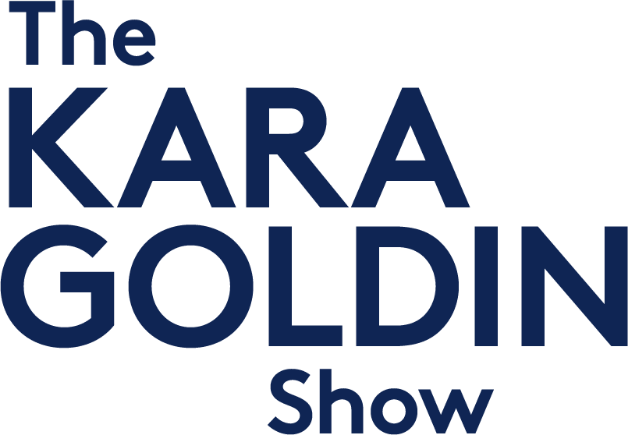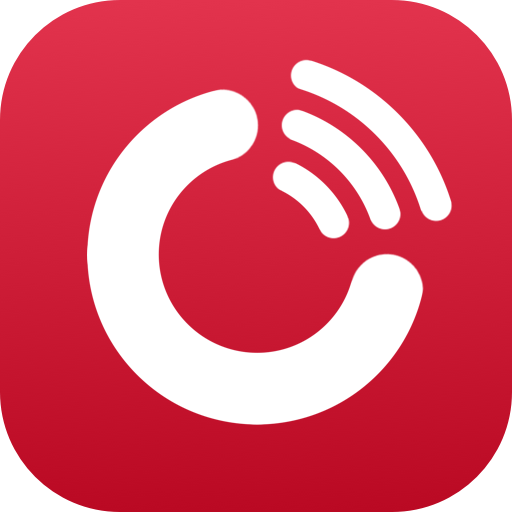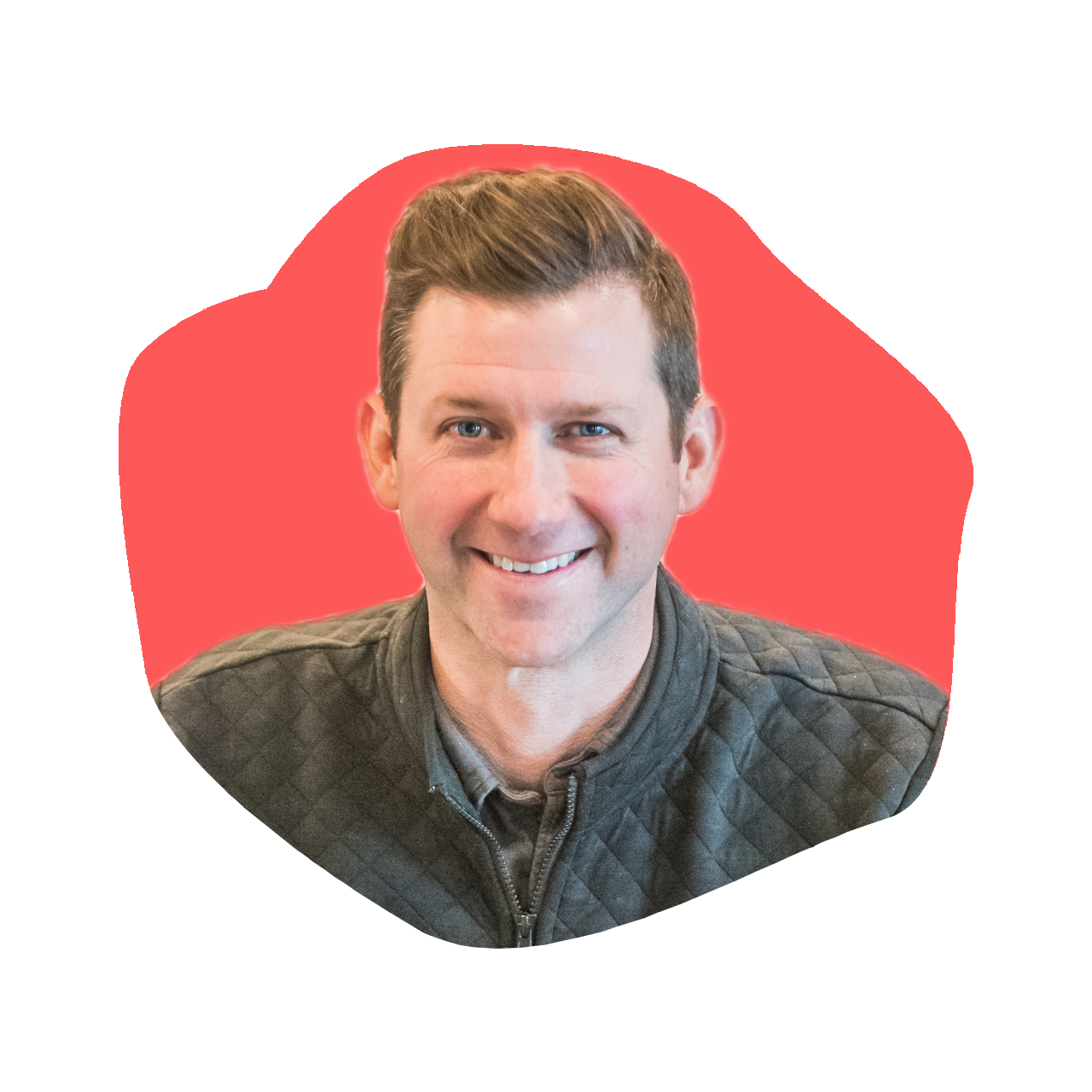Mark Brooks: Co-Founder & CEO of Brainiac
Episode 739

On this episode of The Kara Goldin Show, we’re joined by Mark Brooks, Co-Founder and CEO of Brainiac — the science-driven snack brand on a mission to close the brain nutrition gap and give families better options that fuel brilliance. With most Americans consuming less than 20% of the Omega-3s and choline needed for optimal brain health, Mark and his team are changing that with kid-favorite snacks powered by the BrainPack®, their proprietary blend designed to support memory, mood, focus, and adaptability.
In our conversation, Mark shares the inspiration behind launching Brainiac, the personal journey he and his Co-Founder Jonathan Wolfson went through as dads that sparked the idea, and how they built the brand alongside pediatricians, neuroscientists, and nutritionists. We dive into the science of brain nutrition, the challenges of educating parents in a crowded food space, and what it takes to grow a mission-driven brand into national distribution at Target, Walmart, Whole Foods, and beyond. He also gives us a behind-the-scenes look at the lessons learned from his time leading Truvia and Thrive, the decision to certify Brainiac as a B Corp, and the future of the brain food category.
Whether you’re a parent, a wellness-focused consumer, or a founder in the CPG space, this episode is filled with insights and inspiration you won’t want to miss. Now on The Kara Goldin Show.
Resources from
this episode:
Enjoying this episode of #TheKaraGoldinShow? Let Kara know by clicking on the links below and sending her a quick shout-out on social!
Follow Kara on LinkedIn – Instagram – X – Facebook – TikTok – YouTube – Threads
Have a question for Kara about one of our episodes? Reach out to Kara directly at [email protected]
To learn more about Mark Brooks and Brainiac:
https://www.instagram.com/brainiacfoods/
https://www.linkedin.com/in/mark-brooks-083a6458/
https://www.linkedin.com/company/brainiacfoods/
https://www.brainiacfoods.com/
Transcript
Kara Goldin 0:00
I am unwilling to give up, that I will start over from scratch as many times as it takes to get where I want to be. I want to be you. Just want to make sure you will get knocked down. But just make sure you don’t get knocked out, knocked out. So your only choice should be go focus on what you can control. Control, control. Hi everyone, and welcome to the Kara Goldin show. Join me each week for inspiring conversations with some of the world’s greatest leaders. We’ll talk with founders, entrepreneurs, CEOs and really, some of the most interesting people of our time. Can’t wait to get started. Let’s go. Let’s go. Hi everyone, and welcome back to the Kara Goldin show today. We’re diving into something you probably don’t think enough about brain nutrition. We obsess over protein and collagen, but we count steps and and do all of these other things, but what’s, when’s the last time that you thought about feeding your brain? So my guest today, Mark Brooks, is the co founder and CEO of a company called Brainiac, which is a company dead set on closing the brain nutrition gap with snacks for kids, but not just for kids. I got to enjoy plenty of them as well, and same with my teenagers too. So I think that there is a definitely a wide desire for this product. So Mark’s not just a founder, he’s a builder who scaled major food brands before deciding to tackle one with one of the biggest overlooked problems in our diets, with Brainiac, he’s betting big on omega threes, choline and science backed nutrition to fuel focus and memory, starting with kids. And by the way, Brainiac is already on shelves at Target and Walmart, Whole Foods, you name it. So I can’t wait to get into the science and the journey and the hustle and the hurdles and what it really takes to build a better for you brand as Mark is doing. So welcome. Thank you, Kara, thanks for the introduction. Absolutely. So let’s kick it off. Simple. If someone’s never heard of Brainiac. How do you describe it in a few sentences?
Mark Brooks 2:25
Yeah, we look to put the nutrients that we need, that our brains are made of and connected by, that we should get from foods like salmon and trout and broccoli and liver that my kids don’t get enough of, and we put them into foods that they do enjoy, that they have every day. So we’re looking to bridge the nutrient gap. Because I didn’t realize that our brains need nutrition in the same way that our bodies do.
Kara Goldin 2:52
Yeah, definitely. So was there a personal aha moment besides you deciding I’m going to go do it again and start something new? Was there an aha moment that really sparked the idea that this could be a product that is needed on the shelf, but also a business that could scale?
Mark Brooks 3:09
Yeah. Credit goes to my co founder, Jonathan Wolfson. He was having his third child and little Booker. There was a point very early on where he was diagnosed with failure to thrive. Essentially, that just means you’re losing weight when you’re supposed to be gaining weight. And Jonathan’s dad is a neurologist. His brother in law is a neurologist. And so immediately, you know, they kind of rallied around trying to figure out, so if he’s losing weight, what is that? And it turned out he wasn’t able to to breastfeed at the time, and he and I had been working in the field of Omega three, DHA, one of the core nutrients. We had a science nutrition advisory board of the the academics that really ground the science. And so he kind of connected these dots of I need to get the right nutrients into Booker so that he can start to thrive. And in the conversations with with the the advisory board, they said, Look, there’s really good infant formula out there, so let’s, let’s switch over to infant formula to supplement feeding. These are the nutrients you want to make sure are in there. But while you’re doing that, what about your older kids. And obviously kids that are older, and you say, Well, I mean, they eat fine, but are they getting the salmon, the trout, the liver? And, of course, no, even mine, who they’ll have. They enjoy salmon. They’ll enjoy broccoli, but not every day. So you really need to understand a key point, which is that your brains are developing into your teenage years, and they’re made of structure of the things that you get from food. And so that’s where the connection came. The AHA moment for Jonathan, obviously, he had a bit of an insight with his with his having grown up with his dad. Being, you know, a notable neurologist, he made that connection and gave me a call and said, Hey, we’re gonna, we’re gonna start this company where we’re gonna get people, we’re gonna feed people’s brains. And we started with yogurt. And I that was a head scratcher for me, but then quickly, quickly, it kind of formulated,
Kara Goldin 5:18
so interesting. So what were you doing before Brainiac?
Mark Brooks 5:22
Yeah, before Brainiac. So Jonathan had started a company, founded a company that was all things algae. If you think about algae, it’s a single cell plant. And if you take that and you can put it into fermentation tanks, and it produces just as any plant, if you think about an olive olive oil plant. It’s rich in olive oil. It’s also got other nutrients in it. You can extract the oil, where you can do the same with algae. And so you grow this, the algae in a tank. You can press it and you can get oil. So what we were doing, he started it as a biofuels company, an alternate sense source of fuels, then lubricants, personal care. And then I came on board to look at the food business and try and look at it as a different place to get foods like protein, like oils, and introduce those into the diet. And when we did that, I joined that in 2014 it was kind of one of those, kind of, from a food perspective, was a little icky thinking about algae, which didn’t have the best connotation, but now I think it’s much more natural. Kind of people think sea vegetable, we think macro seaweed. You think, you think some of those other sources, and we launched a brand called Thrive, which got on as a cooking oil that was super healthy, super heart healthy. So kind of this, this pattern of taking something that’s new, where there’s low awareness by the consumer, but it’s genuinely good and better that you have to then educate the consumer with good branding, hopefully clear messaging, and founded on science.
Kara Goldin 6:57
So, so interesting. So I read your description of the brain nutrition gap. Can you share a little bit more about that and why every, not just parent, but I think every human should really be worried about this.
Mark Brooks 7:15
Yeah, so if we start with so our brains are made of. So there’s a lot of water after water. It’s fat. The number one fat that our brains are made of the building blocks, is omega three, DHA. And then you think about our brains are a bunch of electrical signals crossing and they have neurotransmitters. Those neurotransmitters are made of something called acetylcholine, of which choline, which we get in our diet is a precursor, so that gives us these two nutrients, and we get nutrition from all sorts of places. The real question is, do we get enough from our regular diet, or is there a gap? And what we did, so we researched, there’s a study done periodically in the US, in conjunction with your National Institute of Health, and it says, what nutrients are we getting enough of, and why are we in deficit? So we looked at that and determined that we get about 20% of the Omega three DHA that we need on a daily basis, just 20% and if that is the number one structural element of your brain, then there’s an opportunity that there’s a deficiency there that’s really important. And as a parent, I’ve got three kids the amount of additional tutoring or music lessons, or all of those things that we do to inspire our kids growth. But if we’re missing that, that number one building block, whether it be the DHA for the structure, or whether it be allowing our electrical signals to pass, there’s an opportunity with choline. It’s the same. We get about 60% of what we need, because you can get it from broccoli and eggs, but there’s still in all of our diets. And of course, what? When you look at the data, they stratify it by age group, early days, when we’re breastfeeding on infant formula, we’re in good shape, and then it falls off of a cliff and never recovers all the way through the age gaps. And why we all should care is because you need it for development of our brains, but also performance of our brains for for us, and then as we as we go into our later years, having Omega three DHA every day also helps plasticity of our brains, which can help to ameliorate symptoms of cognitive decline later and then across the age groups. There’s a lot of very strong research to do is the link between DHA helping symptoms of ADHD and other learning challenges. And so it can really, it can really help in that space as well. So trying to just find the easy way of doing it, because decide, why hasn’t someone fixed it well? Because it’s really hard to get people to have salmon every day to afford it. Like it, to know how to cook with it, and some of these other nutrients to try and get it into our diets, whether that be kids who might be picky eaters or even ourselves.
Kara Goldin 10:09
So you’re making brain nutrition more accessible. When you launched how many skews did you start with?
Mark Brooks 10:18
I think the short answer is way too many. And that’s that’s something that I think we all sort of fall into, because part of it is, you don’t, you don’t know, we actually started in in cold chain yogurt. Our first products. Our first products went on second half of 2019, and we quickly got some, some national scale with whole foods and target. And we were delighted come the beginning of 2020 to have to have you know our new brand, our new yogurt, sitting on those shelves. And then march 10 of 2020, pandemic hit and cold chain was a terrible business to be in. Stores were shutting. Foot traffic in stores was terrible. People were using those refrigerators for just a few skews that were going to be there for online pickup. You know, target very much reoriented itself to having its stores effectively serve serve people who were driving up. And so thankfully, we also had a shelf stable product and Apple source that we were just trying on Amazon, and then overnight, the opposite happened, whereas cold chain froze, if you excuse the pun, the shelf stable just went crazy. And we, we, we became number two, number three, applesauce on Amazon, noticed by Walmart, yeah. And so accidentally, you know, we were in we bought a yogurt tube machine. We’d installed it. We were using it. We had yogurt drinks. You know, we were quite deep on that side. We had our CO packers set. We were producing at scale. And fairly quickly, we reoriented during the pandemic to be a shelf stable company, other otherwise, from a working capital perspective, it would have been impossible.
Kara Goldin 12:04
How long did that take for you to make that quick but important shift,
Mark Brooks 12:11
emotionally? Quite a while. Actually, you know, because you, you know, we started this thing sort of 2018 2019 you’re working on nothing but getting the product right, you know, getting the flavors right, getting the packaging right. You know, the journey and, and you finally get to launch. And so coming out of it, we probably, we were probably out 2021 we were probably out of yogurt and and fully into the shelf stable snack products that we have. But, yeah, it was. It was definitely managing retailers as well in terms of how to best transition ourselves, because during that time we had Walmart take us on, and managing the exit from Walmart was something was actually probably one of the more notable things we did well, because we still have that relationship today.
Kara Goldin 13:02
That’s incredible. So how did you manage that? What was sort of the key aspect of it,
Mark Brooks 13:07
the most important thing, I guess we all have others other than the relationship with our consumers, but the relationship with our buyers, to be listening and to understand what they need, is something from, you know, we started in probably 300 points of distribution four years ago, and we’re at 30,000 points of distribution just with Walmart today. And in that going, going to the buyer who believed in our product for kids, for yogurt, and saying, look for these reasons, we’re going to have to take a beat and take a pause on on yogurt. But tell me what you need in us making that decision. And we told him the why, the economics, you know, and we we agreed a transition period, and during which he then spoke very highly to his colleagues in the other sets that we were companies that were going to stand by, not leave them with an empty shelf, and then also invest behind the product, and so that that kind of gave us the leg up to then get our distribution quite quite quickly with Apple source into into Walmart.
Kara Goldin 14:15
That’s great. I think what you’re describing too is kind of, you know, basically owning that there is an issue and there’s a problem, versus actually having the retailer come to you and say there’s a problem, that it’s it, it’s just a whole different conversation.
Mark Brooks 14:35
Yeah, very much. And we still use when you have periodic stock outs or when you know each of these different things, it’s far better if we’re leading with that discussion. And we have one, we have some conversations where, you know, the skew isn’t quite right, and it’s not because of the concept necessarily, but maybe the price point isn’t there, and if and we found our recent success, where we’ve kind of, it’s. I shouldn’t you don’t want to say it out loud, but we’re hitting our stride. Has been in consultation with buyers, where buyers have come to us, even with with some product innovation ideas. And could you guys look at this, and could we partner on and that that kind of creates a closer bond in terms of how you do things and why you’re doing
Kara Goldin 15:21
them, definitely. So when you went to this format, you had how many SKUs versus today? Have you shifted? Have you grown? Have you shrunk? How do you think about it?
Mark Brooks 15:33
Yeah, so we’ve definitely grown. So we’re definitely we probably entered applesource With three SKUs today, I’ve got, I’ve got 12 SKUs across two categories in Walmart. I think I’m going to have 12 SKUs in target, but across different across four different aisles, and then in some way, like Thrive Market that’s an incredible retailer and partner for us as well. They they probably do have 20 SKUs as well. And the thing for us is it is we’re conscious of making sure that we don’t go too heavy on SKUs. But when you’re when we’ve got kids enjoying the product as our end consumer. There has to be, there’s a certain fickleness right to the consumption. And so, you know, my my daughter loved, loved, loved the strawberry Apple every day until she hated it, you know. And that, and that period of time wasn’t so, so then she was able to go into a different flavor. So if we can put tools in the toolbox, you know, so there’s something in that lunch box every day for my middle schooler or my elementary schooler. That’s kind of what we do. So we try and make sure. Now you won’t see me do six flavors of the same item, because then I think I’m just diluting but three.
Kara Goldin 16:55
So how have you gotten the word out about Brainiac? So it’s one thing to be able to have maybe some relationships out there with retailers, but you also have to back it up with telling people that you’re actually going to the shelf. So how have you done that?
Mark Brooks 17:10
Well, yeah, and as a small startup company, you know, where we’re not able to do much top of funnel work, you know. So we’ve, we’ve got to start with that first three feet, you know. So our packaging is something that we’ve been pretty agile on, making sure we can refine the messaging, because it has to do. It’s got a heavy lift, right? It’s sitting in in traditional parts of the grocery store, where there’s normally one very large incumbent, and then we come on, as you know, a challenger brand, and we bet that point of difference and that small premium, but premium need to, need to feel as obvious as we can make it so. So a lot of the work is done there. A lot is done using retailer specific influencers and trying to find those partnerships. And then we probably, we ladder up to, you know, relationships in more earned media. So folks like Good Housekeeping, where we’ve, we’ve, we’ve got some good housekeeping awards and some product picks and, you know? So that’s probably the spectrum that we have. We’re not doing, we’re not putting a lot into media. We obviously we do. We do some of the fundamentals on digital, and then our biggest investment is, like, is looking at the retailer digital channels, and then working. So working, thinking about walmart.com, target.com Thrive Market, and working with their tools for awareness and trial, that’s going to be our biggest investment. The categories we’re in, around about 40% of the purchases originate online, even if they’re picked up in store. And so just sort of mapping that, that that past the purchase for the consumer has been a focus.
Kara Goldin 19:04
Has online really, I would guess you’ve been in the industry for a long time. So has that really surprised you, how much of a channel that is for you,
Mark Brooks 19:20
you know, so no, partly because what hasn’t surprised me, so we, I’m in the Bay Area, and so within community, there’s a lot of quite traditional started in DTC businesses that then went retail. And when you think about when we looked early at the consumption of our product, we did a bit of DTC, and fairly quickly determined that the consumer experience you’re not going to go shopping for groceries in different in different, own brand stores. Maybe we had some subscriptions that worked, like that. We also quickly realized. Based from that Amazon can be a vehicle, and it’s a visible vehicle. It’s somewhat advertising as well, for trial. It’s not a it’s not necessarily a source of it’s not necessarily a source to scale a business for relatively accessibly priced products. So in thinking, though, and we launched into the pandemic. And so we benefited from there were a lot of people choosing their shopping lists and their reorder stuff online and making sure they could just drive by and pick it up. And so we kind of just went with that momentum. And I think that’s we’ve and we went early on walmart.com I think perhaps ahead of some of the other folks in the category, seeing what, seeing the intent that Walmart had with a digital channel, how they’re investing behind it, how the Walmart Connect team is excellent and wants to partner with you.
Kara Goldin 20:58
So where do you see the brain food category in the next five years. Do you think you were early in launching this? Obviously, things like dhe and omega, like people know what that is, but not actually putting it into real food and to packaging as you have as well, and really telling people, educating people about the importance of this. I mean, it often takes, you know, the the early people in a category longer, because they’ve got to educate, right, not only the consumer, but also the buyer that is going to give them some shelf space. But where do you hope that the brain food category goes in the next five years? And where do you think it’s headed?
Mark Brooks 21:50
Yeah, when we, when we started, it was, it was very foreign to a lot of people with the idea. And it’s interesting, right? Because I’ve got a drinking coffee here, and I know that there’s a link between drinking coffee and cognition that early pick me up. And so there are a few things that we consume that we know that, but when we’re not thinking of it as investing in the health in the same way that we went through that period where we knew that calcium, I should drink milk because of calcium, because my bones need calcium. They’re made of and the same way protein, we spend a lot of time and money thinking about protein for our muscles and our body fitness. And it’s kind of intuitive when you when you then think about this. So I think that we have seen as we’ve seen success, as we’ve you know, our job is not to go in and be the category leader. We’re there to go and be a challenger brand, be the functional, science based option that can help to grow a category as well, for the for the buyer. We’ve seen, as we’ve gone in and seen some success, we’ve seen some meat to you know, some of the, some of the lead brands start to put the nutrients in. And so, you know, rising tide also helps lift lift all ships in terms of that awareness that you see as well. And I’ve seen a big difference in terms of it surprises me still. So even last week, I was in a grocery store. And as probably all of us in CPG, you get chatting to people who are in your aisle, and have Have you seen and have you tried, if I buy you this, would you try it? You know? And I started to talk about the brain nutrients, and the lady said, No, I know DHA. DHA is. It’s really important. My son has ADHD, and, you know, I can’t afford the supplements. So I try and do the best I can and so, but so that awareness of the nutrients, I think, is increasing. I think we’re playing a role as being probably the first to bring it into mainstream snacks. I think people are doing a good job. When you think about cognitive nutrition in the adult space, there’s some folks doing a really nice job there. And you know when, when we’re thinking about for me, and part of our challenge, because we like to make things hard, is I get to I’ve got to sell to the buyer, why put us on I’ve got to sell to the mom and dad, why pay extra? And then I’ve got to make sure the kid wants to eat it twice, you know? So I’ve also got to make sure the products there. So I think we’ll, I will see ourselves looking at different product ranges. We’ll look to also look for new, new nutrients. We just launched a product with target that brings milk fat globule membrane, which is a key component of breast milk. We’re the first to bring it into foods. It’s been in infant formula, and we’re the first to cross the aisle, in the baby aisle, and bring it into into first foods. And interesting, it has amazing science sitting behind it in terms of cognition scores for kids, particularly in combination with DHA, and that’s just at Target, right? Now that’s a target, and it’ll be launching into thrive and other retailers soon. And what is the name of that SKU so that one is so it’s under our little Brainiac range, and we banner it neuro plus, just to show that as that enhanced nutrition,
Kara Goldin 25:16
incredible. So which Brainiac flavor disappears fastest in your house.
Mark Brooks 25:23
So we launched Walmart came and said, Look, we love what you did in Apple source. Could you do it in fruit snacks? You know, a functionally additive fruit snack would would make a ton of sense. And so we launched fruit snacks. And we just launched a mixed fruit. So just different colors, different different fruit juices in and I just, I can’t, I can’t keep them on the side, and that’s But early days, that’s been exactly the test. So we get new products. I just leave them out. And the ones that go launch, and the ones that are still sitting there done, could it? Because if my kids aren’t stealing them, and they used to, there was one product we did where they opened it from the bottom so it didn’t look like they’d taken them, which was,
Kara Goldin 26:15
I love it. Well, Mark, thank you so much for dropping by and sharing the Brainiac story. Everyone needs to try this. These incredible products from this great company, Brainiac foods.com, but as I said, it’s in many incredible stores as well as online. And if you love this episode, share it with a friend. Drop a review, and thank you so much Mark again for coming and sharing all about it, and until next time on the Kara Goldin show. Thank you. Thank you, Kara. Thanks again for listening to the Kara Goldin show. If you would please give us a review and feel free to share this podcast with others who would benefit. And of course, feel free to subscribe so you don’t miss a single episode of our podcast, just a reminder that I can be found on all platforms. At Kara Goldin, I would love to hear from you too. So feel free to DM me, and if you want to hear more about my journey, I hope you will have a listen or pick up a copy of my Wall Street Journal, best selling book, undaunted, where I share more about my journey, including founding and building. Hint we are here every Monday, Wednesday and Friday. Thanks for listening and goodbye for now.









